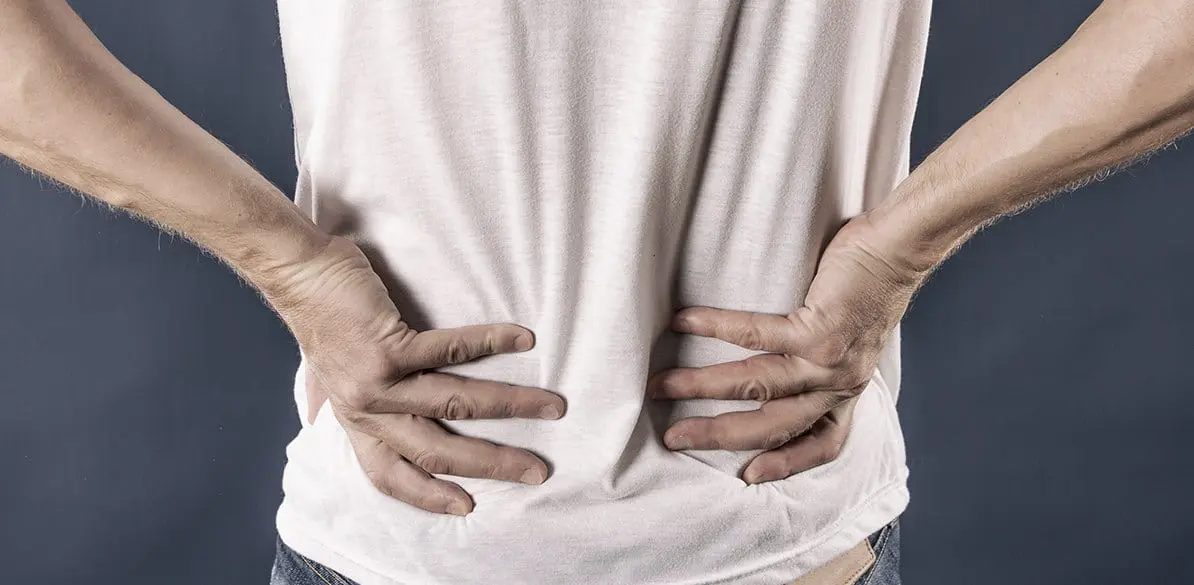Spinal cord compression and disc disease in relation to driving

Spinal cord compression
Spinal cord compression signs depend on site and interference with driving:
- A high cervical compression causes spastic tetraplegia. Involvement sometimes occurs of the phrenic nerve, leading to hemidiaphragmatic paralysis, and of the medullary spinal nerve, resulting in paralysis of the trapezius and sternocleidomastoid muscles.
- Low cervical compression induces paraplegia and radicular syndrome in the upper limbs.
- Thoracic compression causes thoracic and abdominal girdle pain and paraplegia.
- After lumbosacral compression, due to the anatomical characteristics of the area, even small lesions affect several medullary segments and roots. Sphincter disorders are constant and occur early, and flaccid paralysis of the quadriceps, that will make use of driving pedals difficult, is commonly seen.
- Sacral compression induces flaccid paralysis of lower limbs, associated to marked sphincter disorders.
- Compression of the cauda equina results in peripheral lower limb paralysis, that is, flaccid paralysis with amyotrophy, with pain irradiating from the lumbar region to the buttocks and lower limbs through the back of thighs and legs.
Tips
- Loss of strength, pain, and sensitive and motor changes prevent movements for adequate use of vehicle controls, and driving is therefore not possible.
- Pain and neurological or motion restrictions may lead the physician to advise against driving.
- Patients cannot drive while they are experiencing symptoms such as pain, loss of strength, and sensitive changes interfering with driving safety.
- Surgical spinal cord decompression requires a more or less prolonged subsequent functional recovery and safety period in which driving will not be allowed until a favourable report is issued by the specialist.
- Depending on the required treatment for each condition, the specialist will determine in each case the ability to drive of the patient and will report it at each revision.
- Eventual sequelae must be assessed for its potential interference with driving and reported. The possibility of recovering from sequelae over time should also be evaluated.
- After surgery, the convalescence period before unrestricted driving is permitted is left to the discretion of each physician.
- Permanent disabilities may be evaluated based on the specialist report to try and adapt the vehicle to the driver and permit driving with the restrictions imposed by law for each case.
Intervertebral disc disease
Symptoms of disc disease mainly occur at the cervical and lumbar regions of the spine. Lumbar pain irradiating through the territory of the sciatic nerve is most common, followed by painful cervical conditions.
- Cervical pain arising in a disc is usually associated to stiffness, muscle spasm, headache, and pain referred to shoulder, scapula, chest, or face.Sympathetic chain irritation causes dizziness, vertigo, tinnitus, blurred vision, retro-ocular pain, and facial or mandibular pain.Compression of vertebral artery by osteophytes induces a vertebrobasilar syndrome.When roots are involved, paraesthesia and acute cervicobrachial pain also occur.
Myelopathy with spinal cord stenosis caused by osteophytes is seen in patients over 55 years of age, while acute, central soft disc hernia is more common in the young.
Most common symptoms include gait difficulties, loss of manual skills, spasticity, limb paresthesia, urinary urgency, generalised weakness, and loss of strength in legs. Pain is not common.
Treatment with analgesics, anti-inflammatories, muscle relaxants, tranquilisers, and rest is most often used. Gradual mobilisation is then started, and achieves a variable recovery in terms of both time and results. If conservative treatment fails, surgery is required.
- Thoracic disc protrusion is uncommon, but the clinical picture may be complex, with irradiating thoracic or radicular pain, with possible sensory deficit and loss of strength in the legs.
Paraparesis or frank paraplegia, requiring surgical decompression, may occur.
Lumbar disc protrusion leads to joint dysfunction and instability because of loss of adaptation to movements of the mobile segment of the spine.Disc loss due to degeneration causes vertebral body subluxations, a gradual increase in lumbar lordosis, and a decrease in diameters of the central and lateral canals, that is enhanced by the osteophyte reaction.
Foramen diameter may also decrease, possibly leading to root compression situations with the corresponding symptoms
Conservative treatment consisting of rest, drugs, manipulation, infiltrations, and subsequent physical therapy is used, except in cases with a progressive neurological deficit.
- Patient return to daily activities, including driving, should be achieved as soon as possible.
Tips
- In addition to general health recommendations, patients should be advised to avoid sudden movements and sit in an adequate position.
- The vehicle should have a high, comfortable seat, with a straight back and a good head rest support.
- Pain and neurological or motion restrictions may lead the physician to advise against driving.
- If the patient is experiencing a period of anxiety or stress, all symptoms are exacerbated, thus decreasing vehicle control.
- Drugs used for symptomatic treatment of these clinical conditions often have a sedative effect, e.g. benzodiazepines, clonidine, tricyclic antidepressants, and major tranquillisers. These may cause confusional states in some cases.
- Physicians should warn patients that even if symptoms have improved and they already able to drive, maintenance treatment may cause them significant and dangerous side effects that may delay driving resumption until doses are decreased or treatment is discontinued.
- Patients cannot drive while they are experiencing symptoms such as loss of strength, pain, and sensitivity and motor changes causing functional restriction.
- Decompression surgery is required in some cases and is usually successful, but its results should be evaluated by the physician over time.
- After surgery, the convalescence period before unrestricted driving is permitted is left to the discretion of each physician.
- Potential sequelae should be evaluated and listed in a report together with the course of the patient condition and the physician’s opinion as regards driving at each follow-up visit.
- Once recovery has been achieved, the specialist will tell if the patient is able to drive with no restrictions.
